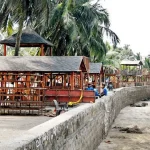In Mesa, Arizona, maintaining a home’s interior often means dealing with drywall wear and tear caused by dry weather, remodeling, or general aging. Whether homeowners are planning renovations or simply seeking to improve the appearance of their walls, drywall repair is a foundational step. Professional services specializing in drywall repair Mesa AZ help address cracks, dents, uneven textures, and outdated finishes with precision and care. This complete guide explores key components of effective drywall repair, from initial assessment to final finishing, tailored to Mesa’s climate and housing styles. Understanding these steps ensures homeowners make informed, lasting improvements to their living spaces.
Assessing Structural Integrity
Before any surface work begins, it’s critical to assess the condition of the existing drywall to determine whether it’s suitable for further improvements.
- Checking for Moisture Damage: Although Mesa’s dry climate minimizes the risk of water intrusion, leaks from plumbing or past roof issues can leave hidden damage. Professionals use moisture meters and visual inspections to check for softness, mold, or staining.
- Testing for Stability: The drywall should be firmly attached to the wall studs. If it’s bulging, sagging, or separating from the framework, reinforcement or full panel replacement may be necessary before applying any texture or paint.
- Identifying Cracks and Gaps: Temperature fluctuations can cause expansion and contraction in walls, leading to small or large cracks. Repair specialists determine whether these are cosmetic or signs of deeper structural issues.
Removing Old Fixtures or Wallpaper
Outdated wall fixtures, anchors, or wallpaper often leave behind damage once removed. Proper drywall repair addresses these issues and prepares the surface for refinishing.
- Anchor Holes and Wall Plugs: Removing screws or wall anchors for TVs, shelving, or artwork often leaves holes. These must be patched with joint compound and sanded flush to avoid bumps under new paint or texture.
- Light Fixture or Thermostat Relocation: Moving a thermostat, light switch, or sconce may reveal cutouts in the drywall. Contractors repair these openings with mesh patches or replacement sections and ensure proper blending with the surrounding wall.
- Wallpaper Residue and Tears: Stripping wallpaper can damage the outer layer of drywall, leaving gouges or loose paper. After complete removal, surfaces are sealed with primer, skim-coated, and sanded for a fresh base.
Skim Coating for a Smooth Finish
Skim coating is a common and essential drywall repair technique used to create an ultra-smooth surface, especially after extensive patchwork or wallpaper removal. In Mesa homes, this step is often necessary to prepare walls for high-quality finishes.
- Full Wall Skim Coating: For walls with widespread imperfections or inconsistent textures, a full skim coat using a joint compound is applied with a trowel or wide knife. This method smooths the entire surface evenly.
- Spot Skim Coating: In cases of minor repairs or touch-ups, contractors may apply skim coats only to the affected sections, then feather the edges into the surrounding area to create an invisible transition.
- Preparing for Tiling or Painting: A smooth, dust-free surface is essential for tile adhesives to stick or for paint to apply evenly. The skim coating ensures the surface is ideal for any finish, from flat paint to glossy tiles.
Correcting Uneven Textures
Many older homes in Mesa feature outdated or uneven wall textures, such as heavy knockdown or popcorn ceilings, that no longer align with modern interior design.
- Scraping or Sanding Excess Texture: Heavy or inconsistent textures are removed using sanding tools or scrapers. Professionals take care not to damage the drywall paper beneath the finish.
- Feathering Blends: When only part of a wall is repaired or textured, blending is critical. Contractors feather new textures into the old surface to avoid obvious transitions or lines.
- Applying a Consistent Finish: Once flattened or repaired, a new texture such as orange peel, knockdown, or smooth coat can be applied across the surface for a uniform appearance.
Wall Resurfacing Tips
Mesa’s arid environment poses unique challenges during drywall work, particularly with joint compound drying too quickly or becoming brittle. Experienced contractors rely on specific techniques and materials suited for the region.
- Using Setting-Type Compounds: Quick-setting joint compounds (such as “hot mud”) dry via chemical reaction rather than evaporation. These are ideal in low-humidity climates like Mesa where traditional mud may dry too fast on the surface and crack.
- Maintaining Compound Moisture: During application, contractors may mist walls lightly or cover working sections with plastic sheeting to retain some humidity and prevent premature drying.
- Choosing the Right Tools: Stainless steel taping knives and flexible trowels are preferred for smooth application. Sanding sponges and pole sanders help refine the surface without over-drying or damaging the wall.
- Temperature-Aware Scheduling: Since high temperatures can speed up drying, many professionals plan to work during cooler morning hours or use air conditioning to moderate indoor temperatures.
Conclusion
Drywall repair is more than just patching holes, it’s a multi-step process that prepares walls for beauty and durability. From assessing structural soundness to applying flawless textures, drywall repair must be adapted to the area’s climate and housing styles. Whether homeowners are updating their décor, removing old fixtures, or preparing for a remodel, professional repair services help ensure every detail is handled properly. Skim coating, texture correction, and thoughtful tool selection all contribute to a long-lasting, professional finish. For residents of Mesa, investing in expert drywall repair guarantees a smoother, more attractive home interior built to last.






